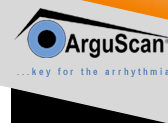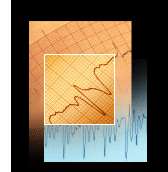









Arrhythmia Bioinformatics Central Databank (ABCD)
Founders:
Polyclinic of the Hospitaller Brothers of St. John of God in Budapest (BIK) Division of Cardiology: medical background, arrhythmia research center, ArguScan Ltd. : engineer background, developing cardiology instruments and the arrhythmia analyzer, Hungarian Bioinformatics Institute Ltd. : bioinformatics background, developing database and world wide web surface. Premise:
Medical researchers have developed significant needs for statistics-based arrhythmia research tools. Currently, these researches are based on limited access databases (EMIAT, MPIP, ATRAMI, etc) collected for special purposes.
At the present time, results from genomic studies concerning arrhythmia can only be obtained with a specific bioinformatical background.
Aims:
The founders of ABCD found it necessary to establish a broadly available, continuously growing databank of non-specific, 24-hours ECG recordings for the broad support of arrhythmia research.
They would like to provide a comprehensive service for their users such as consulting, archiving, research groups, within the confines of ABCD.
For the ABCD to work as a constantly expanding research center with a high volume of long-range data, they would like to make the users interested in the expansion process, on a "data for data" basis.
Along with annotated arrhythmia records, the ABCD would provide genomic marker (Single Nucleotide Polymorphism - SNP) profiles to enable the use of related diagnostic and prognostic results in genome research.
With its novel approach, the ABCD could also become a useful source of clinical information also for the geneticist and, especially, for the pharmacogeneticist in developing tailor-made personal medicines and treatments.
Achievements:
In order to achieve broad accessibility, the informatics of ABCD will be fully Internet-based.
Data exchange will be via theArguScan Arrhythmia Analyzer Center (A3), which prepares the records for upload and processes the records downloaded via the Internet. The 24-hours ECG records could originate from a Holter device, from a telemetric system, or from a real-time monitoring system.
Besides general arrhythmia analyzer services, the A3 system also contains a Cardiometric System (CS) module which enables researchers to define and use custom-built algorithms for clinical and experimental research without computer programming knowledge.
Through arrhythmia analysis, the A3 system produces the annotation of the 24 hours ECG records, enabling database searches.
The preprocessed records will be saved in a four-level database in the ABCD system. This structuring provides more efficient search capabilities and a smaller data-flow. On the first level we store the medical data of patients provided at hospitalization (personal data of patient, other boundary conditions such as diseases, operations, medicines, habits, register, etc.). The second level contains the statistical tables and the 24-hours trends. The third level holds the RR intervals and the type of QRS (Normal, PVC, SVPB, etc.) beat by beat. On the fourth level the system stores the complete ECG records.
The ABCD database can be accessed with a general browser. Similarly to the A3, we can use the CS (Cardimetric System) to define algorithms for searching context-dependent beat-by-beat defined special arrhythmias in a world wide web query, which is indispensable for efficient data-mining in a big database.
It is important to note that in ABCD all patient data are anonymized. A medical researcher has the exclusive access for ONLY his or her own patients' identifiers!
To connect to the ABCD, it is necessary to obtain and license the A3 system. It contains a connector component named LinkToA3, which resolves the data conversion issues. Through the A3 system the whole ABCD becomes accessible for cardiologic research.